-
The Greatest Artist of the 20th CenturyRicky Yanas
“From now on…”, (Guy) Debord said, “The art of the future will be the creation of situations or nothing.”
My interest in the work of Edward Bernays, the “Father of Public Relations”, comes from a deep connection with art and an ethical concern with it as a means of communication. There is power in the work of art, setting sensory traps for a viewer to be immersed in an experience and ideas. With this power comes a moral component. An artist can set the mind free, offer keys to exploration, break down perceptual walls, or build them. Two thousand years ago, Roman poet, Virgil wrote the Aeneid, a masterful piece of literature, legitimizing rule of Julius Caesar and affirming the governmental shift from Republic to Empire, proving art’s seductive provocations, to rearrange signs, symbols, history, and time. Art can also be an apparatus of oppression.
-
At the beginning, of the 20th Century, Sigmund Freud’s nephew, Edward Bernays, took his uncle’s research along with the work of other important psychologists, sociologists, journalists, and intellectual elites and applied it towards remolding the American psyche. He utilized scientific research of the collective mind and his own intuitive sense of symbolic power to create elaborate “news-worthy” events that would effectively link his clients’ products to specific ideas. He invented the commercial “tie-in”; with the right amount of money and connections, one could synthesize complex ideas with simplified images in the public mind towards profitable results. In the 20s, his campaign for American Tobacco (1890-1994), effectively linked cigarette smoking with Women’s Suffrage, simultaneously removing the stigma of the “female smoker” and promoting progressive ideals. He also created “Bacon and Eggs” (Beech-Nut Packing Company) and soap sculptures (Ivory Soap).
In his writings on public relations (a term he used interchangeably with “propaganda”), Bernays articulated the coming revolution in the marketplace and government. He offered methodologies and tools for controlling the hearts and minds of the public, the consumer. This would allow those in power, or those with enough money to retain him as their PR counsel, to quietly govern a mass population, without overt violence. Andy Warhol, his contemporaries and disciples read the surface of this revolution and exploited it for its tactile qualities. Edward Bernays helped build the mechanism and its more elusive ideological core. What I have done is place his own words (not simply displace) onto their image/object consequences (Athropologie ads, cir. 2012) a century after he began refining his strategy. I hope to find a point of entry through which to see the the ramifications of his discoveries and resist their entirely un-banal consequences. ⊗
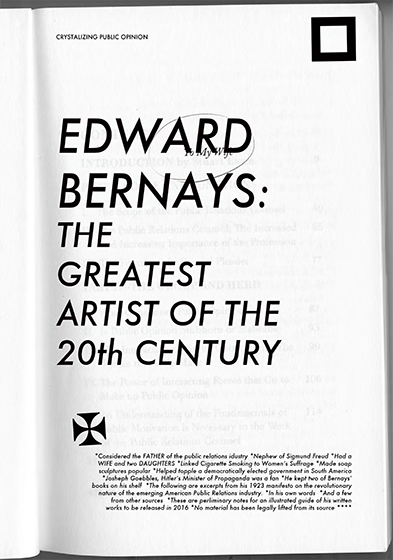
-
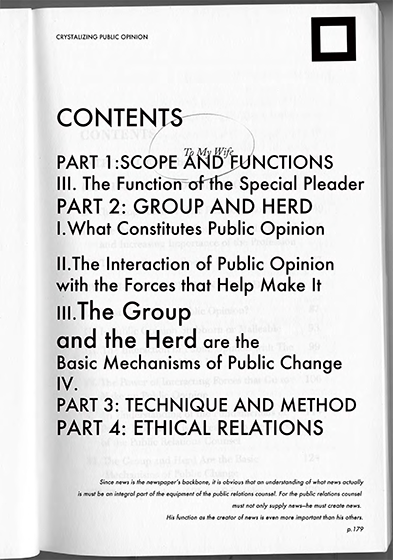
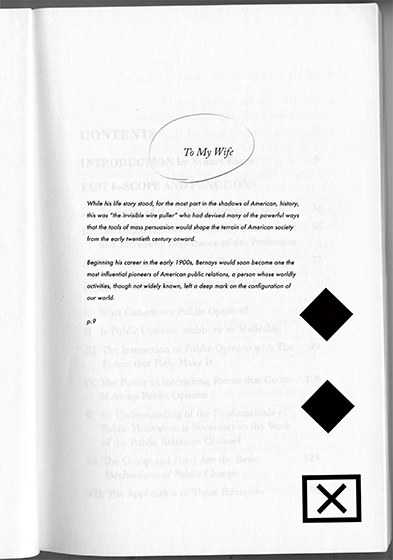
-
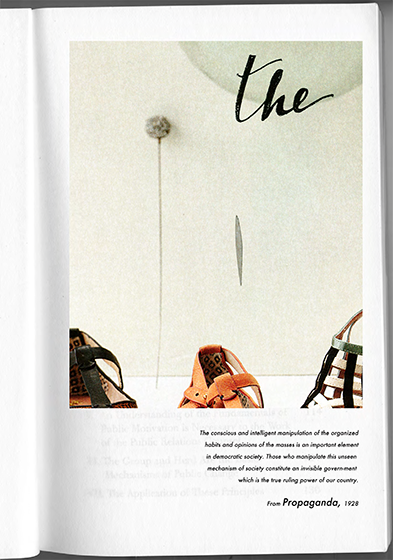
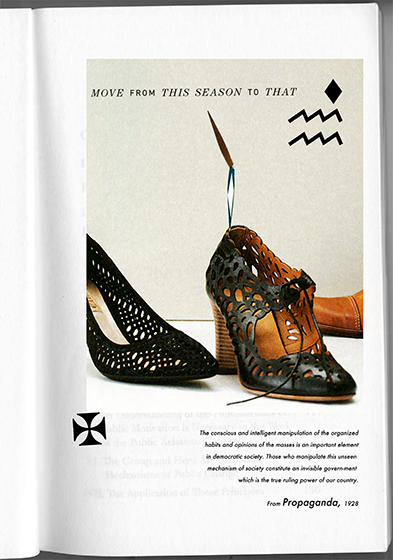
-
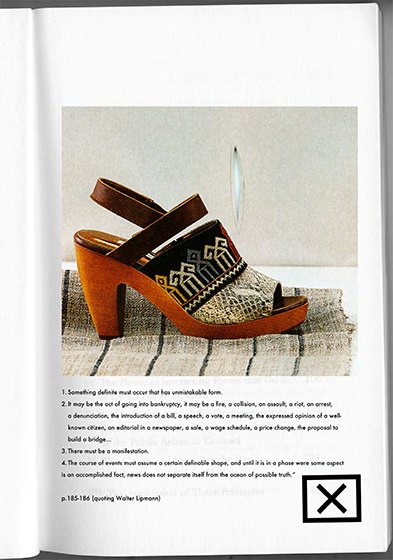
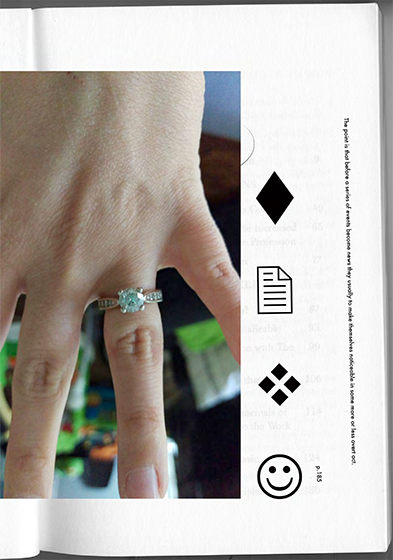
-
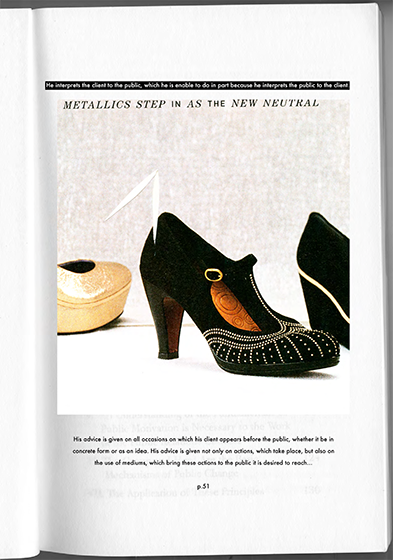
COMMENTS
ALSO THIS ISSUE

The Problem of the Indian

In The Hour of The Wolf

Falling in Love with the Idea of Her

Accepting the Spoilers

The Moment I Finally Fell for Dawson’s Creek

Angela’s Ashes

Redressing Showgirls

MONSTER JAM™ / MILK JUG

Images for Earth Day

Riding with Lana Del Rey and Courtney Love

The Greatest Artist of the 20th Century